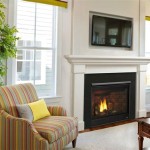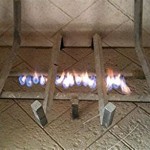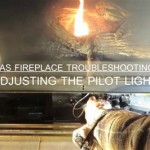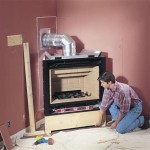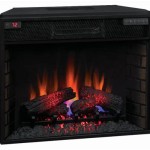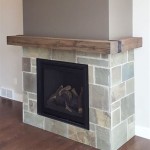Candle Logs For Fireplace: A Comprehensive Guide
Candle logs, also known as fire logs or wax logs, represent a contemporary alternative to traditional firewood for fireplaces. They offer a convenient and cleaner-burning option for individuals seeking the ambiance of a fire without the complexities associated with sourcing, storing, and managing wood. This article explores the composition, benefits, usage, safety considerations, and environmental factors related to candle logs, providing a comprehensive understanding of this popular fireplace fuel.
The appeal of candle logs lies in their ease of use. Unlike firewood, which requires splitting, seasoning, and careful stacking, candle logs are pre-formed and ready to ignite. This convenience makes them particularly attractive to individuals with limited space or those who simply prefer a hassle-free fire experience. Furthermore, candle logs offer a more consistent and predictable burn compared to wood, minimizing the need for constant adjustments to achieve a desired flame and heat output.
Composition and Manufacturing of Candle Logs
Candle logs are primarily composed of a blend of wax and combustible materials. The specific composition varies depending on the manufacturer and intended burn characteristics, but common ingredients include paraffin wax, petroleum-based waxes, vegetable-based waxes (such as soy wax or palm oil), and recycled sawdust or other wood byproducts. The proportion of each ingredient influences the log's burning time, flame appearance, and aroma.
The manufacturing process typically involves blending the wax and combustible materials in a heated vat. The mixture is then poured into molds of various shapes and sizes, often mimicking the appearance of natural logs. In some cases, artificial cracks and grooves are added to enhance the realistic aesthetic. Once the mixture cools and solidifies, the logs are removed from the molds and packaged for sale. Some manufacturers incorporate additives to enhance the flame color, produce crackling sounds, or release fragrant scents. These additives are typically non-toxic and designed to complement the overall fire experience.
The use of recycled wood byproducts in candle logs contributes to their sustainability, diverting waste materials from landfills and reducing the demand for virgin wood. The specific type of wax used also plays a role in the environmental impact of the product. Vegetable-based waxes are generally considered more sustainable than petroleum-based waxes, as they are derived from renewable resources. However, the environmental footprint of vegetable-based waxes can vary depending on the farming practices used to cultivate the source crops.
Benefits of Using Candle Logs
Candle logs offer several distinct advantages over traditional firewood. One of the most significant benefits is their convenience. They eliminate the need for chopping, stacking, and drying wood, saving time and effort. This is particularly appealing to individuals who live in apartments or homes with limited storage space.
Another key benefit is the cleaner burn associated with candle logs. They typically produce less smoke, creosote, and ash compared to firewood, which can reduce the risk of chimney fires and improve indoor air quality. The reduced ash production also simplifies cleanup after the fire. The composition of candle logs is engineered to ensure a more complete combustion process, minimizing the release of particulate matter into the atmosphere.
Consistent burn times are another advantage of candle logs. Manufacturers provide estimated burn times for their products, allowing users to plan their fires accordingly. This predictability eliminates the guesswork associated with burning firewood, where burn times can vary depending on the type of wood, its moisture content, and the airflow in the fireplace.
Furthermore, many candle logs are designed to be more environmentally friendly than burning traditional wood. The use of recycled materials, such as sawdust, reduces waste and conserves natural resources. The lower smoke emissions associated with candle logs also contribute to improved air quality, particularly in areas with high fireplace usage.
Safety Considerations and Proper Usage
While candle logs offer several benefits, it is crucial to follow safety guidelines to ensure a safe and enjoyable fire experience. The first step is to ensure that the fireplace is properly ventilated. A functioning chimney flue is essential for safely venting smoke and combustion gases out of the home. Regular chimney inspections are recommended to identify and address any potential hazards, such as creosote buildup or structural damage.
When lighting a candle log, users should follow the manufacturer's instructions carefully. Typically, this involves placing the log in the center of the fireplace grate and igniting the edges of the log with a long-handled lighter or match. It is important to avoid placing flammable materials near the log, such as paper, kindling, or furniture. The use of a fireplace screen is also recommended to prevent sparks from escaping the firebox.
Supervision is critical when burning candle logs. Fires should never be left unattended, and children and pets should be kept a safe distance away from the fireplace. It is also important to avoid overloading the fireplace with too many logs, as this can create excessive heat and potentially damage the fireplace or chimney. Adequate ventilation is important to prevent the build-up of carbon monoxide. A carbon monoxide detector should be installed in the home, near the fireplace, to detect the presence of this dangerous gas.
Extinguishing a candle log fire typically involves allowing the log to burn completely. Dousing the fire with water is generally not recommended, as it can create steam and potentially damage the fireplace. If it is necessary to extinguish the fire prematurely, smothering the flames with sand or baking soda is a safer alternative. The ashes should be allowed to cool completely before being disposed of properly. Embers can remain hot for several hours, so it is important to exercise caution when handling them.
It's important to note that candle logs are generally designed for use in open-hearth fireplaces and are not suitable for wood-burning stoves or inserts. The confined space of a stove or insert can lead to excessive heat buildup and potentially damage the appliance. Before using candle logs, it is crucial to consult the manufacturer's instructions and ensure that the logs are compatible with the type of fireplace being used.
Environmental Considerations and Sustainability
The environmental impact of candle logs is a complex issue with various factors to consider. As previously mentioned, the use of recycled materials and vegetable-based waxes can contribute to their sustainability. However, the sourcing and processing of these materials can also have environmental consequences.
The production of paraffin wax, a common ingredient in candle logs, is a byproduct of petroleum refining. While this utilizes a waste product, the extraction and processing of petroleum are associated with significant environmental impacts, including greenhouse gas emissions and potential spills. Vegetable-based waxes, such as soy wax and palm oil, are derived from renewable resources, but their cultivation can lead to deforestation, habitat loss, and water pollution, depending on farming practices.
The combustion of candle logs releases carbon dioxide, a greenhouse gas that contributes to climate change. However, the amount of carbon dioxide released is generally less than that produced by burning an equivalent amount of firewood, particularly if the candle logs are made from recycled materials. The carbon footprint of candle logs can be further reduced by using sustainably sourced waxes and minimizing transportation distances.
When comparing the environmental impact of candle logs to traditional firewood, it is important to consider the entire lifecycle of each fuel source. This includes the harvesting, processing, transportation, and combustion phases. Firewood harvesting can lead to deforestation and habitat loss if not managed sustainably. The transportation of firewood can also contribute to greenhouse gas emissions. The combustion of firewood releases smoke, particulate matter, and volatile organic compounds, which can negatively impact air quality.
The choice between candle logs and firewood ultimately depends on individual preferences and priorities. Individuals who prioritize convenience and cleaner burning may find candle logs to be a suitable option. Those who prioritize sustainability should carefully consider the composition and sourcing of the logs and compare their environmental impact to that of sustainably harvested firewood.
Further advancements in candle log technology are continually being developed, focusing on the use of more sustainable materials and improved combustion efficiency. These advancements aim to minimize the environmental impact of candle logs while preserving their convenience and aesthetic appeal. As consumer awareness of environmental issues grows, the demand for more sustainable fireplace fuel options is likely to increase, driving further innovation in the candle log industry.

How To Make A Faux Fireplace Insert With Real Logs Interior Frugalista

Tealight Fireplace Log

The Lakeside Collection Rustic Stacked Faux Birch Wood Log With 11 Tea Light Candle Holder Realistic Great For Indoor Or Outdoor Fireplace Com

Non Working Fireplace Oh The Possibilities Picklee Artificial Candles In Candle Holder

Birch Log Led Fireplace Insert Country Door

Log Candles Harvest Colors Fall Decor Thanksgiving Table Decorations Fireplace Mantle Holiday Gift Hostess Present Autumn Set

Great For When It S A Little To Warm Fire Birch Tree Decor Wood Crafts Candles In Fireplace

20 Simple Ways To Decorate A Fireplace Mantle With Flameless Candles

How To Make A Faux Fireplace Insert With Real Logs Interior Frugalista

Diy Wooden Candle Holders Hearth And Vine
Related Posts

